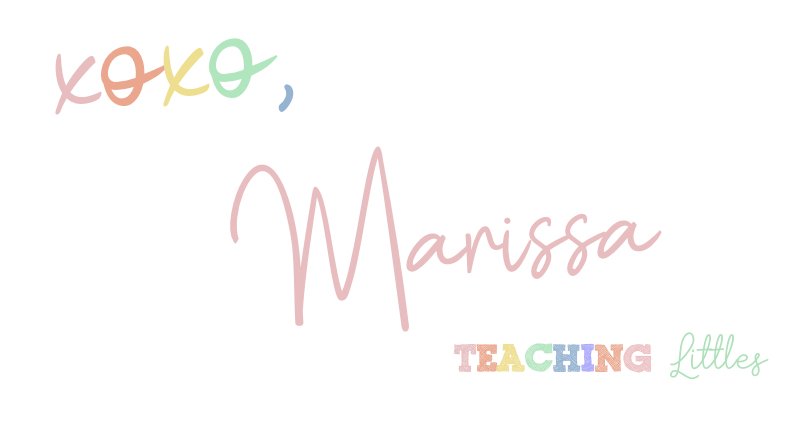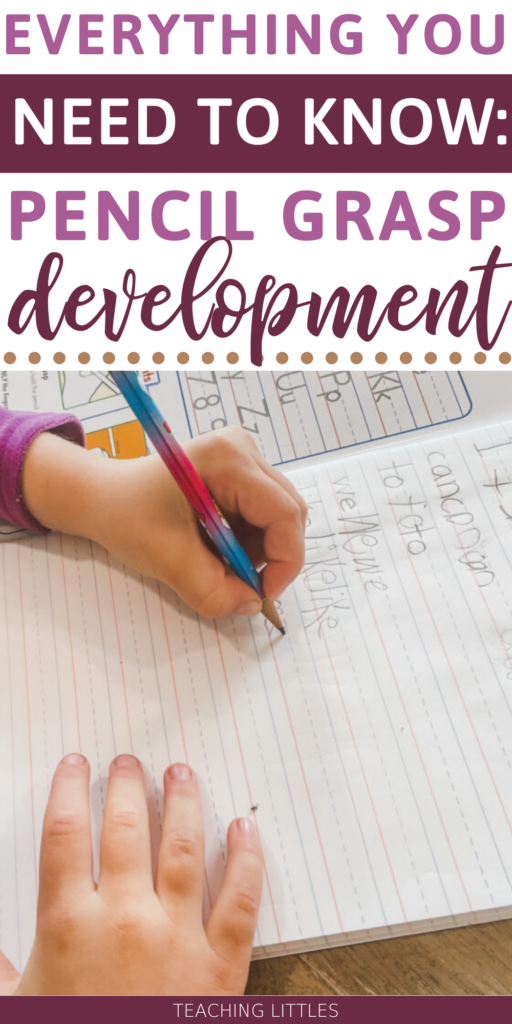Proper pencil grasp is important for learning how to write. It can be difficult for little hands to learn how to properly grasp on a pencil because of the awkward feeling.
So, what is proper pencil grasp and how do you teach it?
This post may contain affiliate links of which I would receive a small compensation should you purchase.
What is Pencil Grasp Development?
As your child’s hands develop and change, so will their grasp.
From 1-2, they will likely have a whole-hand type of grasp. From about 2-3 they will transition to developing a grasp using their fingertips and thumb for support.
What are the Different Stages of Pencil Grasp?
There are three main categories of pencil grasp development: primitive, transitional, and mature.
Primitive Pencil Grasp Development
The Palmer Supinate Pencil Grasp
The primitive pencil grasp is the initial way children grab a pencil. Sometimes you will hear this called the fist grasp. This type of grasp is often seen in children around 1-1.5 years old.
Typically, they hold the pencil with their whole hand and use arm to make motions. Their motions are probably pretty uncontrolled at this stage of development.
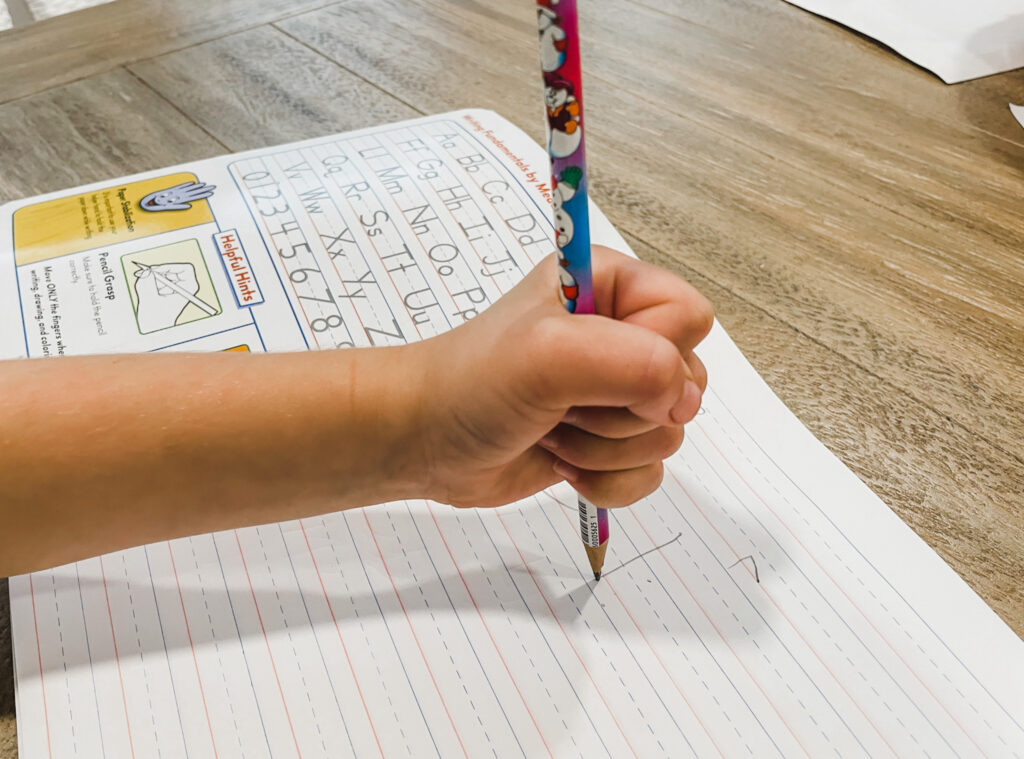
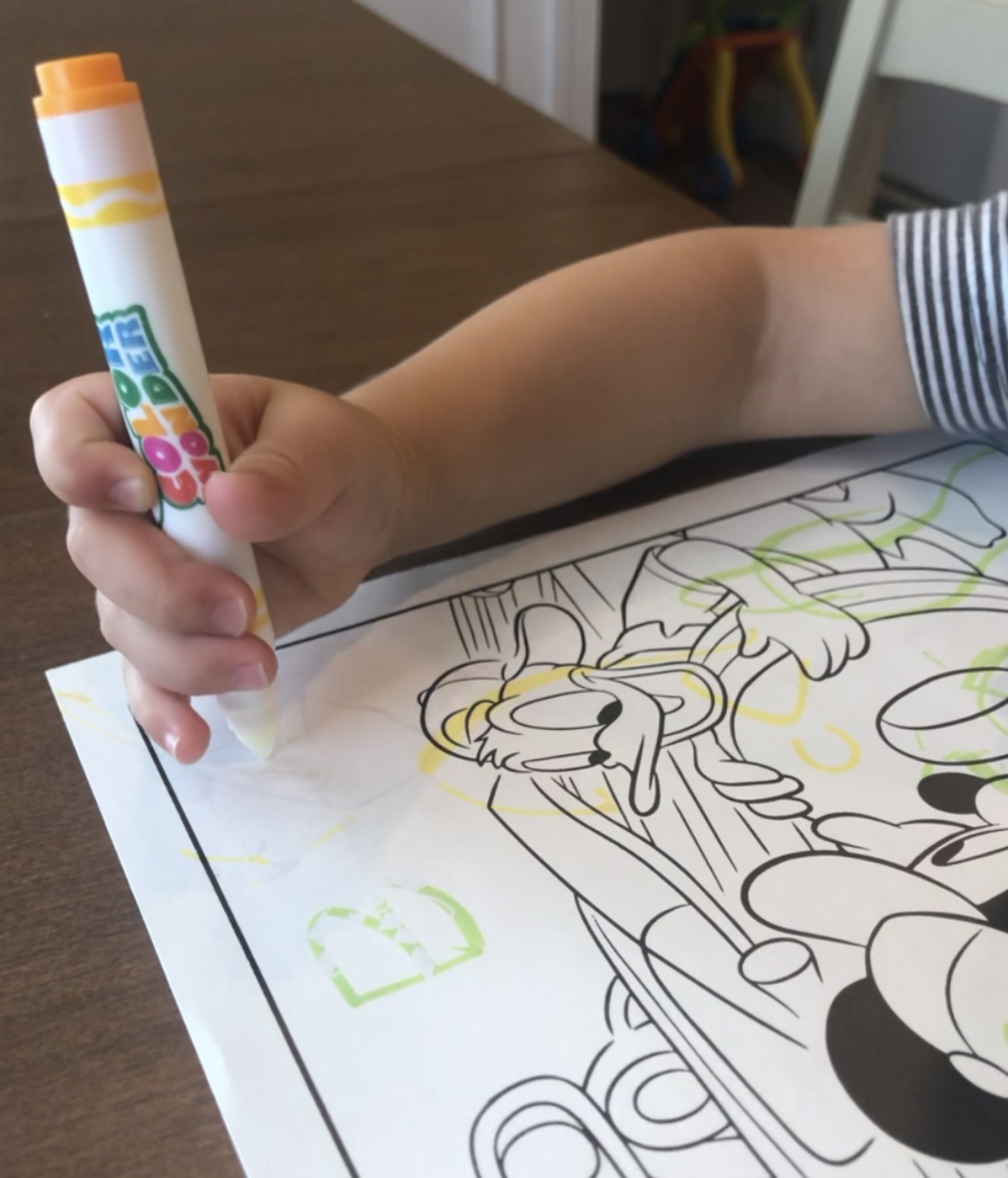
The Digital Pronate Pencil Grasp
This type of grasp emerges around 2. You will see that they are starting to use their fingertips to hold the pencil, however, their grip may look a little bizarre.
The pinky finger will be towards the top of the pencil, while the pointer and thumb are near the tip. The motions will become more stable, and instead of using the whole arm, they will start using more of a wrist motion.
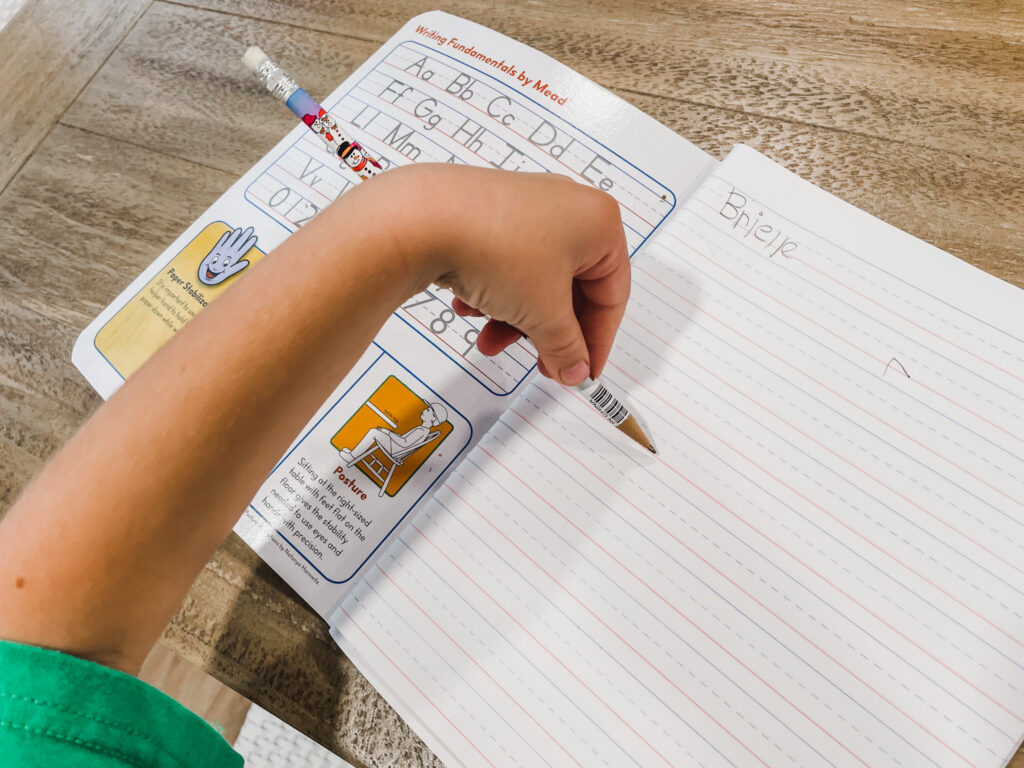
Transitional Pencil Grasp Development
Four Finger Grasp
The four-finger grasp emerges around 3.5-4 years old. This grasp looks like the pointer, middle, ring, and pinky fingers along one side of the pencil and the thumb on the other side. As the child matures, the fingers will likely move down into a more functional grasp.
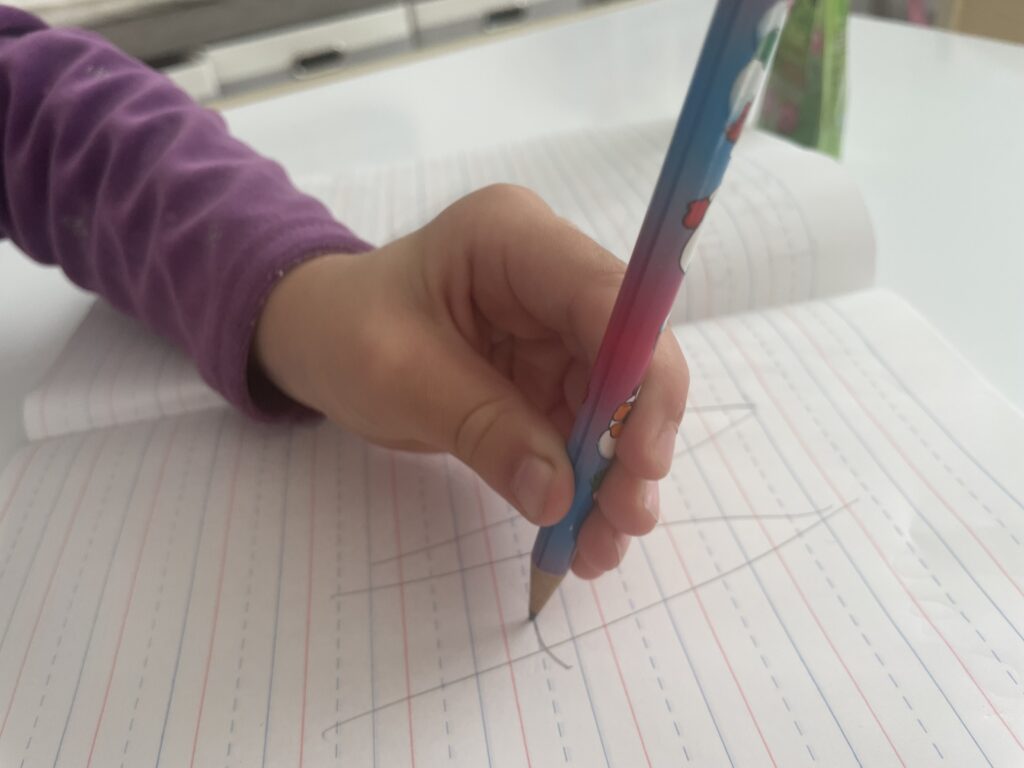
The Static Tripod and Quadruped Pencil Grasp
The static tripod grasp is the most ideal out of all. This is because it is less exhaustive and more dynamic. This grasp looks like the pencil resting on the middle finger while the pencil is being held by the thumb and pointer fingers.
The quadruped pencil grasp is similar to the tripod but involves 4 fingers. The pencil is resting on the ring finger while being supported by the thumb, pointer, and middle fingers. This grip is slightly less functional than the tripod grip.
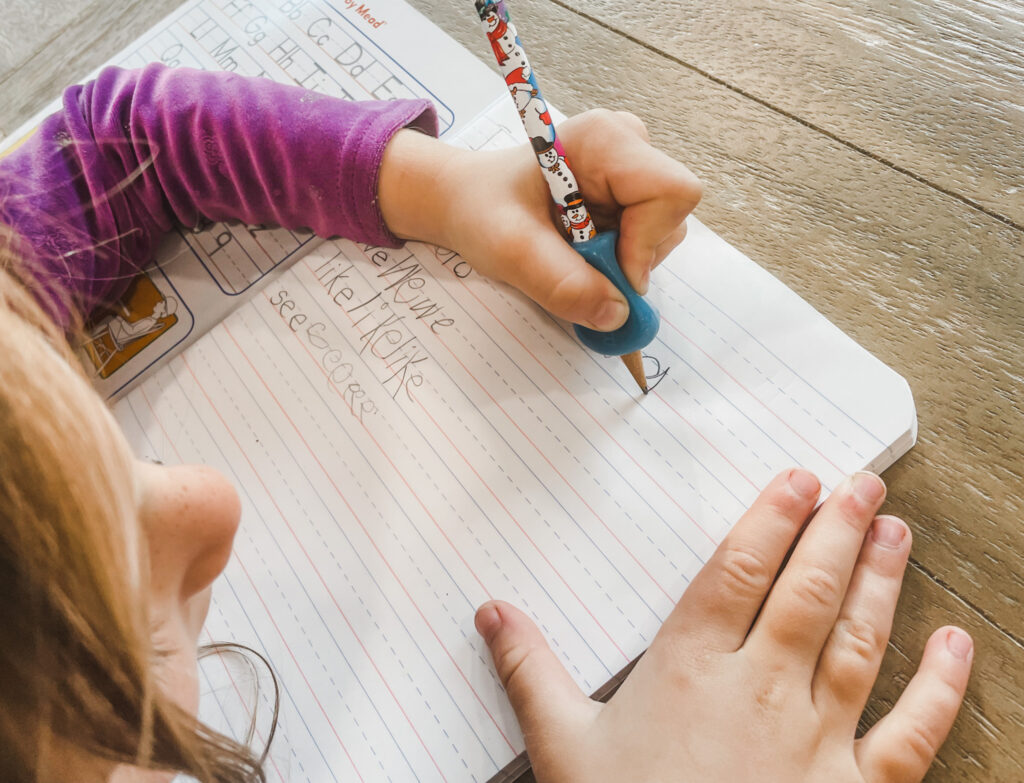
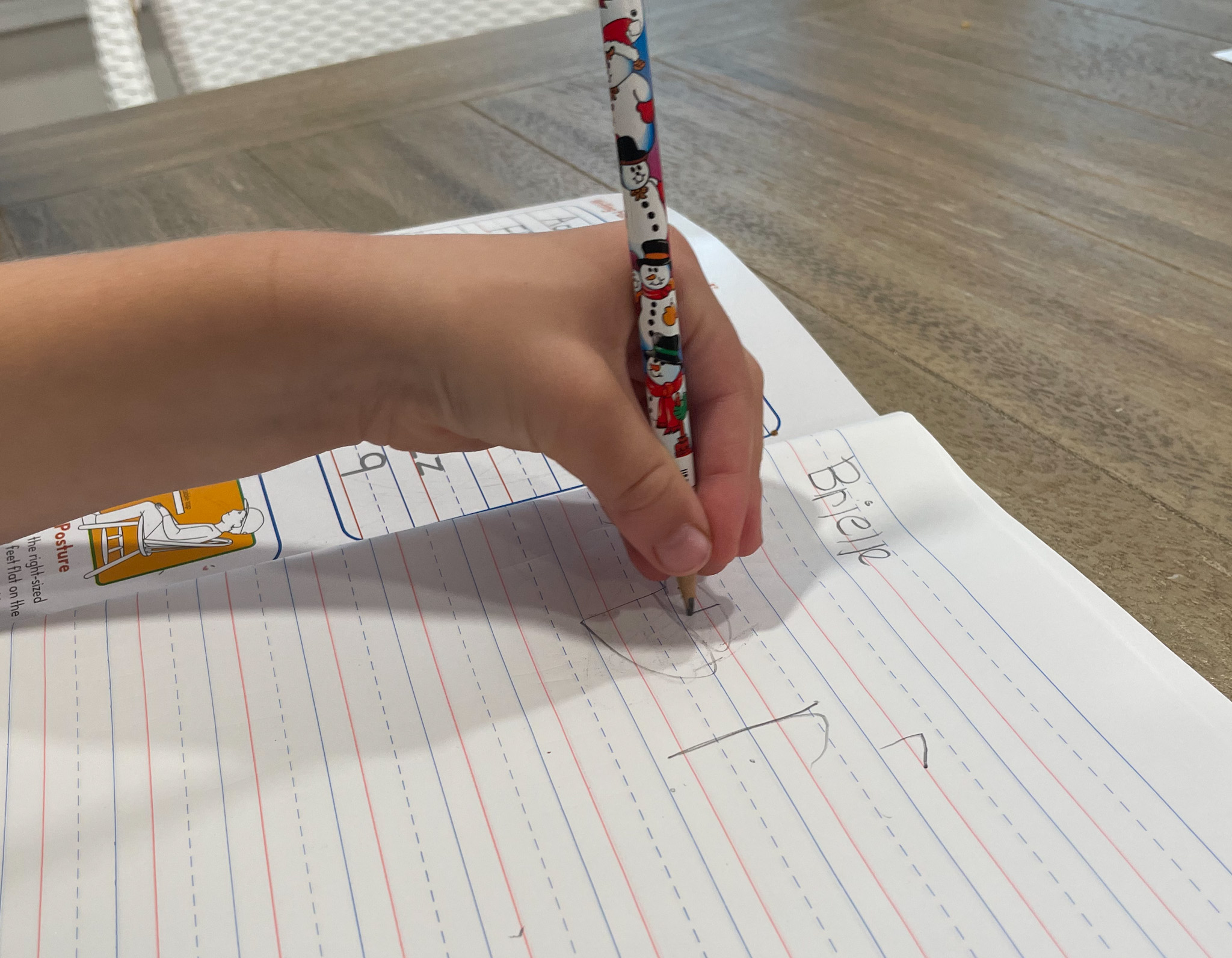
You can get your own pencil gripper on Amazon here.
Mature Pencil Grasp Development
The Dynamic Tripod Pencil Grasp
The dynamic tripod pencil grasp is considered the mature pencil grasp. This typically happens between 4-7 years of age.
The child will use their fingers to make the motions rather than their arm or wrist.
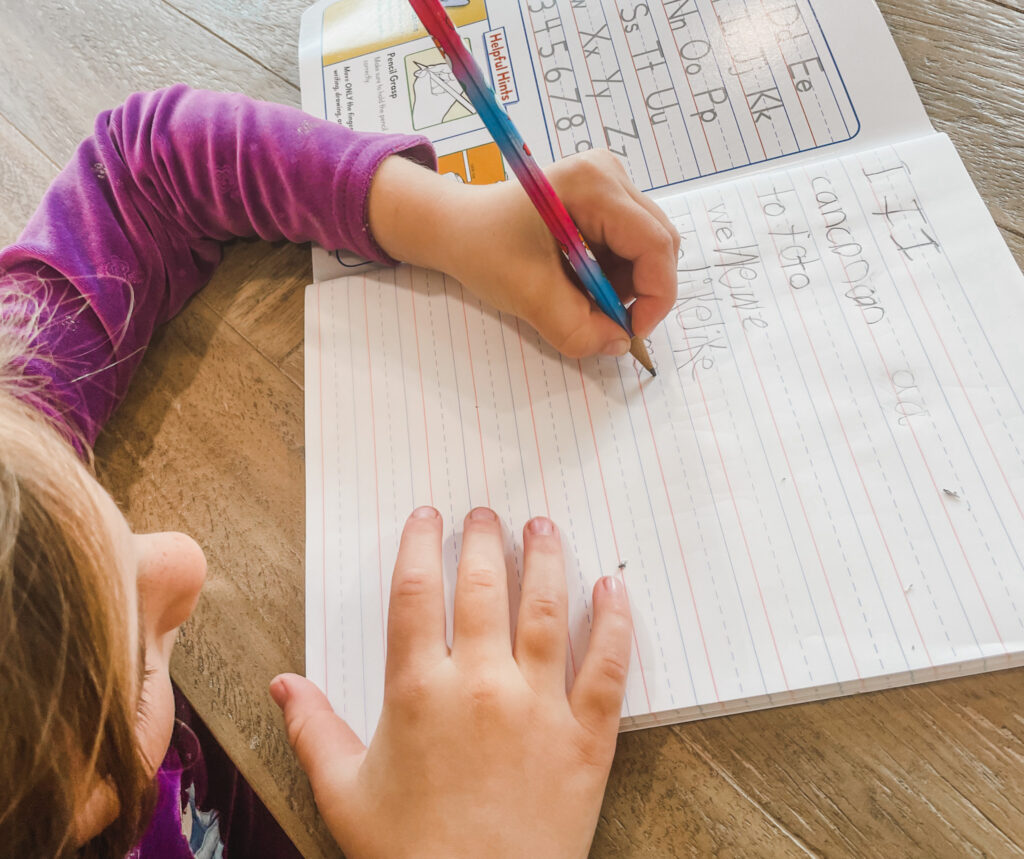
What to do if Your Preschooler keeps Switching their Pencil Grasp
Learning a new skill is hard, especially when it involves using different muscles. It is not uncommon to see kiddos switch back and forth at first when learning a new grip.
Their new way of gripping may feel a bit awkward, or their muscles might be tired. The best thing to do is support them!
It is okay to switch back and forth while they are learning something new. Once they have a little break, you can remind them to try a different grip.
What if your Preschooler is Using a Different Pencil Grasp?
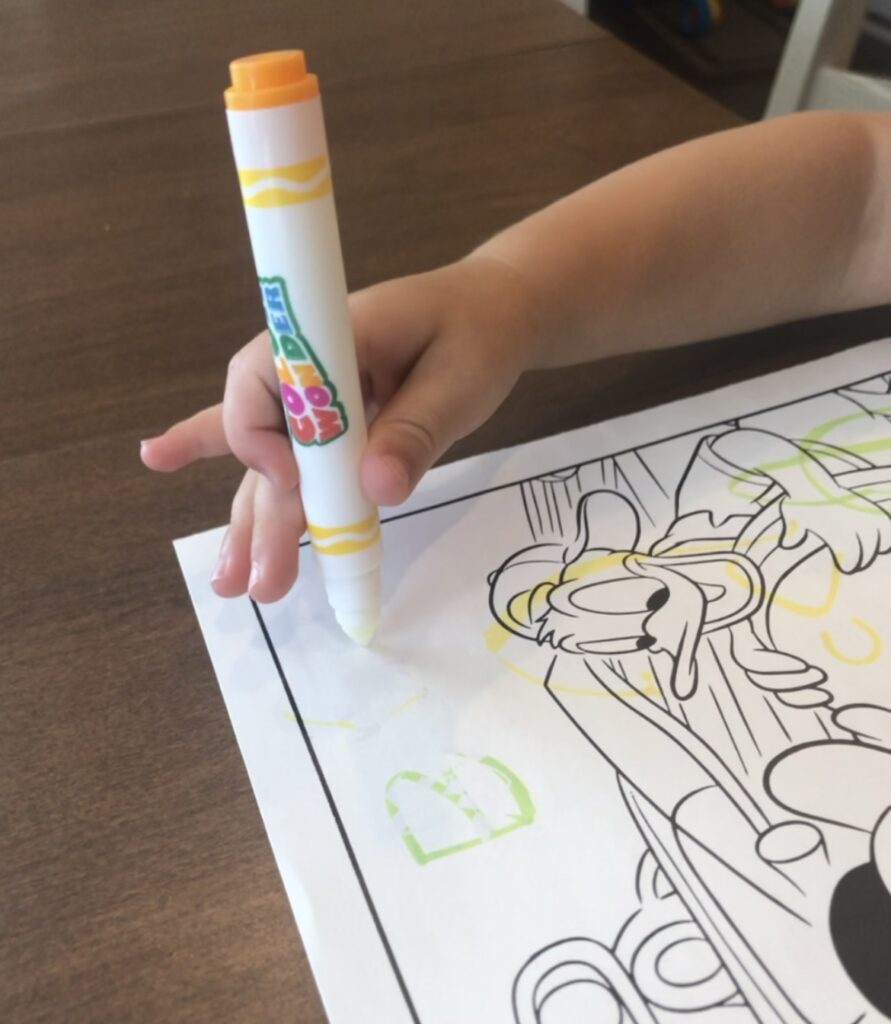
The stages above are ideal, however, there are a lot of different grip patterns that are considered normal or acceptable.
If your child’s grip is different than the 4 stages above, you need to identify if their grip is functional or inefficient. If it is inefficient, you definitely need to take corrective action.
What are the Signs of an Inefficient Pencil Grasp?
When you see these types of issues, you are likely dealing with an inefficient pencil grasp.
- Difficulty in keeping up with writing
- Pain in Hand
- Decrease in Legibility
How Can I Help My Child Develop a Pencil Grasp?
When working on development, make sure to be encouraging and not forceful. Being forceful will do more harm than good.
- Encourage fine motor activities like coloring and drawing
- Use a thicker pencil
- Encourage gross motor development activities
- Practice with them
What are Some Activities for Improving Pencil Grasp?
Squeezing: Squeezing helps to improve the strength of the muscles in the hands and wrist. Using a stress or squishy ball is great for this.
Pulling/Pushing: Using a rubber band around a few of their fingers have them pull apart their hands.
Rolling Playdough: Playdough is phenomenal for hand strength, and what little doesn’t love playdough?!
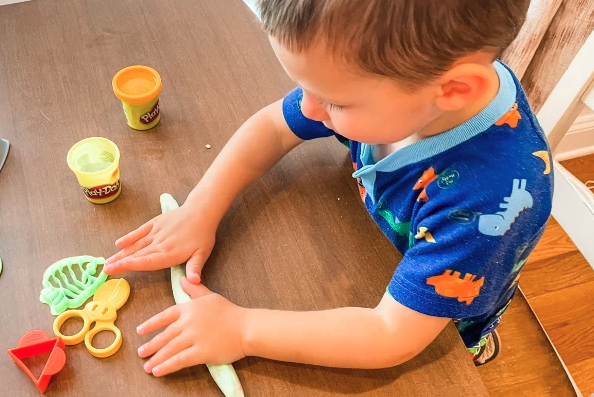
Crumbling Paper: Crumbling paper is a super easy activity that all little ones love. You can use smaller strips of paper to make it more dynamic.
Threading: Threading things like threading cheerios or beads helps to strengthen fine motor skills.
Visual Motor Activities: Mazes, lacing cards, and playing with blocks are great visual motor activities for little ones.
Finger Warmups: All muscles need to be warmed up! Activities like twirling a pencil, finger pushups, and finger dancing help to warm up the muscles in the hands.
Using Tweezers: Use tweezers to have littles move objects like cotton balls from one location to another.
Related Post: Why are fine motor skills important?
When does Pencil Grasp Become Important?
Pencil grasp development becomes very difficult as children get older, so you should be working on it with them through pre-school and kindergarten.
All children develop differently, so be sure to give room for different types of development. Remember, learning a new skill is hard.
Make sure to be supportive, patient, and not forceful! What are your favorite activities to develop pencil grasp?
Let me know in the comments below!
